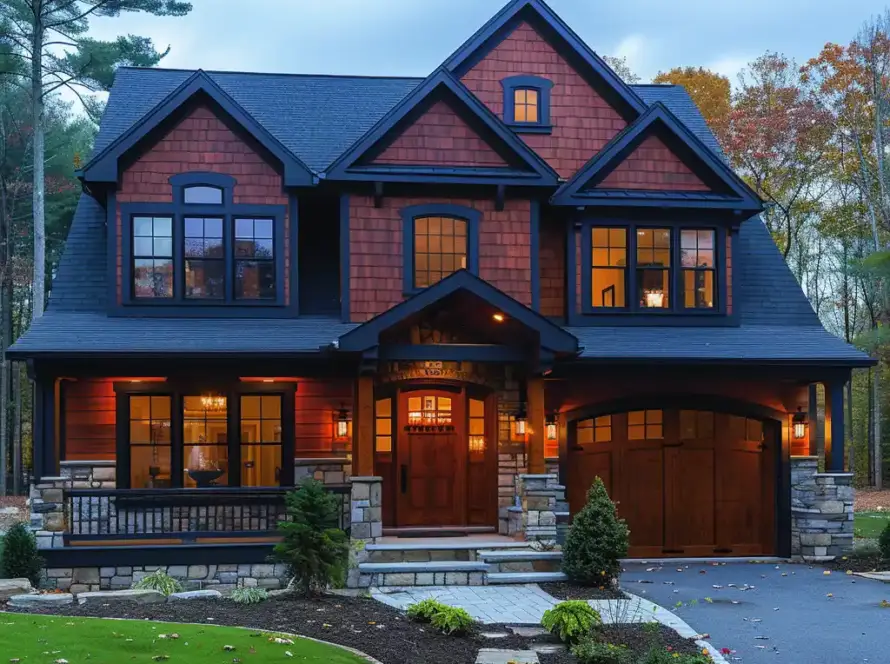- Deck construction for hot tub installation
- What are the structural requirements for a hot tub on a deck?
- What support is needed for a hot tub on a deck?
- How to determine if a deck can support a hot tub?
- Can my deck hold 2000 pounds?
- Is it a good idea to put a hot tub on decking?
- How to build a deck strong enough for a hot tub?
Adding a hot tub to your outdoor living space can transform your backyard into a personal retreat. However, placing a hot tub on a deck requires careful consideration of structural engineering, weight distribution, and safety factors. This comprehensive guide will help you understand the essential requirements for building or evaluating a deck that can safely support your hot tub investment.
Deck Construction for Hot Tub Installation
When planning deck construction for a hot tub, the primary focus must be on creating a structure that can handle significant weight loads while maintaining safety and stability. A typical hot tub weighs between 400-900 pounds empty, but when filled with water and occupied by users, the total weight can easily reach 2000-6000 pounds or more.
The construction process requires upgrading from standard deck building practices to engineered solutions that account for concentrated loads. This means using larger lumber dimensions, closer joist spacing, and enhanced foundation systems. Professional consultation with a structural engineer is often recommended, especially for larger hot tubs or elevated deck installations.
Key considerations during the planning phase include soil conditions, local building codes, accessibility for utilities, and integration with existing structures. The deck design should also accommodate the hot tub’s specific dimensions while providing adequate clearance for maintenance and operation.
What Are the Structural Requirements for a Hot Tub on a Deck?
The structural requirements for a hot tub deck go far beyond standard residential deck specifications. Most building codes require hot tub decks to support a minimum live load of 100 pounds per square foot, compared to 40 pounds per square foot for standard decks.
Foundation Requirements:
- Concrete footings must extend below the frost line
- Footing diameter should be increased to distribute loads effectively
- Post connections require engineered hardware rated for higher loads
- Ground preparation must ensure stable, non-settling base conditions
Framing Specifications:
- Floor joists typically require 2×10 or 2×12 lumber instead of standard 2×8
- Joist spacing should be reduced to 12 inches on center maximum
- Blocking between joists becomes mandatory for load distribution
- Beam sizes must be calculated based on actual hot tub loads
Decking Surface:
Non-slip surface treatments for safety around water
Minimum 5/4-inch thick decking boards
Composite materials may require additional support due to flexibility
Proper ventilation underneath to prevent moisture issues
What Support Is Needed for a Hot Tub on a Deck?
Proper support for a deck-mounted hot tub involves a multi-layered approach that distributes weight evenly and prevents structural failure. The support system must address both static loads (the weight of the hot tub and water) and dynamic loads (movement from users and equipment operation).
Primary Support Elements:
Enhanced Beam System: Double or triple beams directly under the hot tub footprint, typically using engineered lumber or steel beams. These beams should extend beyond the hot tub area to distribute loads to multiple support posts.
Reinforced Post Structure: Support posts should be sized larger than standard deck construction, often 6×6 inches minimum. Posts must be properly connected to concrete footings with appropriate hardware and bracing.
Load Distribution Plates: Installing load distribution plates or pads directly under the hot tub feet helps spread point loads across multiple joists. These plates can be made from steel, concrete pavers, or engineered composite materials.
Lateral Bracing: Additional bracing between posts and beams prevents lateral movement and adds overall structural stability. This is particularly important for elevated decks or areas subject to wind loads.
How to Determine if a Deck Can Support a Hot Tub?
Evaluating an existing deck’s capacity to support a hot tub requires both visual inspection and load calculations. This assessment should ideally be performed by a qualified structural engineer or experienced contractor familiar with structural loads.
Visual Inspection Checklist:
- Check for signs of sagging, bouncing, or flex in the deck structure
- Examine connections between posts, beams, and joists for looseness or damage
- Assess the condition of footings and foundation elements
- Look for proper flashing and moisture protection
- Verify adequate ventilation under the deck
Load Calculation Process: Start by determining the total weight of your hot tub when filled with water and occupied. Add the weight of the empty hot tub, maximum water capacity, and estimated user weight (typically 150-200 pounds per person). This total weight must then be divided by the hot tub’s footprint area to determine pounds per square foot.
Professional Assessment: For definitive answers, hire a structural engineer to perform load calculations based on your specific deck configuration. They can provide stamped drawings and recommendations for any necessary reinforcements. This is particularly important for insurance purposes and building code compliance.
GET IN TOUCH
You can trust this job to professionals – contact us today
Can My Deck Hold 2000 Pounds?
Whether your deck can support 2000 pounds depends on several factors including the deck’s design, construction quality, age, and the distribution of that weight. A 2000-pound load represents a medium-sized hot tub with moderate water capacity.
Standard Deck Limitations: Most residential decks built to minimum code requirements are designed for 40 pounds per square foot live load. For a 2000-pound hot tub with a 6×8 foot footprint (48 square feet), this creates approximately 42 pounds per square foot – very close to the design limit and not accounting for safety factors.
Distribution Considerations: The key factor is how the weight is distributed. Point loads at hot tub feet create concentrated stresses that can exceed the deck’s capacity even if the total weight seems manageable. Proper load distribution through reinforcement plates or beams is essential.
Safety Margins: Engineers typically design for loads significantly higher than expected to provide safety margins. However, if your deck wasn’t specifically designed for concentrated loads, additional reinforcement will likely be necessary before installing any hot tub.
Is It a Good Idea to Put a Hot Tub on Decking?
Installing a hot tub on a properly designed and constructed deck can be an excellent choice, offering several advantages over ground-level installations. However, the decision requires careful consideration of both benefits and potential challenges.
Advantages of Deck Installation:
- Improved accessibility and integration with outdoor living spaces
- Better drainage and protection from ground moisture
- Enhanced views and privacy options
- Easier access for maintenance and utilities
- Can work with sloped or challenging terrain
Potential Challenges:
- Higher initial construction costs due to structural requirements
- More complex permitting and inspection processes
- Greater exposure to weather and temperature fluctuations
- Increased maintenance requirements for both deck and hot tub
- Noise transmission to areas below the deck
Best Practices for Success: When properly engineered and constructed, deck-mounted hot tubs can provide decades of reliable service. Key success factors include professional design, quality construction materials, proper installation, and regular maintenance of both the deck structure and hot tub components.
How to Build a Deck Strong Enough for a Hot Tub?
Building a deck capable of supporting a hot tub requires upgrading virtually every component of the structure beyond standard deck construction practices. This process should begin with professional design and permitting before any construction begins.
Design Phase: Start with a structural engineer’s drawings that specify exact lumber sizes, spacing, and connection details. The design should account for your specific hot tub model, local climate conditions, and soil characteristics. Obtain proper building permits and schedule required inspections.
Foundation Construction: Excavate footings to below frost line depth and increase footing diameter to distribute loads. Use high-strength concrete and install post anchors rated for the calculated loads. Ensure proper drainage around footings to prevent settling.
Frame Construction: Install support posts using 6×6 minimum lumber with proper bracing between posts. Construct beam systems using doubled or tripled lumber or engineered beams as specified in the design. Install floor joists at closer spacing (typically 12 inches on center) using larger dimensional lumber.
Specialized Features: Install blocking between all joists for load distribution and attach any required load distribution plates or reinforcement systems. Ensure proper ventilation and moisture protection throughout the structure. Apply appropriate finishes and safety features before hot tub installation.
Quality Control: Schedule all required inspections during construction and address any concerns immediately. Document the construction process with photos and maintain all engineering drawings and permits for future reference.
Professional Installation Recommendation: While this guide provides comprehensive information about hot tub deck construction, we strongly recommend consulting with qualified structural engineers and experienced contractors for your specific project. Proper engineering and construction are essential for safety, code compliance, and long-term performance.



2 Comments
James_Renovates
Great article, super helpful! I’m planning to install a 6-person hot tub on my raised deck and was wondering — if the total weight including water and people is around 5,000 lbs, would double 2×10 joists spaced 12″ apart with added blocking be enough? Or should I add additional support posts directly under the tub area?
Also, has anyone here tried recessing the hot tub partially into the deck? I’m thinking of doing that for aesthetics, but I’m concerned it might limit access to the controls or servicing the unit later on. Would love to hear any tips or things to avoid.
John S.
Our specialist has sent you an email regarding your inquiry. If you have any questions about our services, feel free to contact us — we offer free consultations and numerous construction and remodeling estimates.